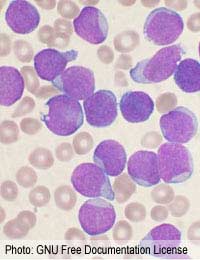I Lost My Hair to Cancer: A Case Study

What is it like to have to cope with cancer and then to have to deal with losing your hair as well? We talked to leukaemia survivor Donald, who was just 19 years old when he became ill, but who nevertheless took a positive approach.
"I had long hair before," Donald explains, "but when I got the cancer I was treated with Chemotherapy and that caused it to fall out. It grew back as I recovered, but a few years later the cancer came back and I had to have a bone marrow transplant, and after that my hair just didn't grow back in properly."
Gradual Hair Loss
With some kinds of cancer it's possible to protect against hair loss by chilling the scalp, which reduces blood flow in that area and stops the aggressive drugs reaching it in quantity, but this isn't possible the type of leukaemia Donald had because it's distributed throughout the blood itself, so everything has to be treated.Losing hair that way doesn't happen overnight, however, which meant that Donald had to make some difficult decisions.
"The first time, during the first few weeks, it thinned quite dramatically, and then I basically had to take it off," he says. He felt better about having no hair than about having thin, straggly hair. "I was offered a wig," he adds. The NHS provides them to all patients facing this kind of hair loss (see our article NHS Help With Wigs). But he chose not to take it. "I just don't think they look very good, even good ones. I wouldn't want to wear one."
A New Look
How did he feel about people's responses to his sudden change in appearance?"People didn't really say much about it. They were trying to be considerate. The main thing I worried about when I came out of the hospital was that I looked like a skinhead, which I thought might attract trouble. But I didn't have a problem with it damaging my self image."
Indeed, Donald was so confident in his approach to being bald that it started to have an effect on other people who hadn't known he was ill. When he started visiting the student union he'd been a part of before going into hospital, other people there started shaving their heads! This may have been because they saw him getting his head stroked by various female admirers.
There were practical problems, however. "It was cold, and you have to watch for sunburn as well. I had to try to keep out of the sun."
Gone for Good
When his hair grew back in, Donald experimented with it, dyeing it and cutting it in different ways. However, with the return of his illness, he had to face losing it for good. A bone marrow transplant involves subjecting the body to heavy doses of radiation as well as chemotherapy."Afterwards I was on certain drugs and as a result it thinned a great deal and grew in strange directions. So it was easier just to take it off. I felt a lot better when I'd done that."
So how does he feel about having no hair now? "I still feel like myself," he says. "And I'm happy with it."


Re: Can Head Lice and Parasites Cause Hair Loss?
I got parasites from a person that stayed in my house. I had to go to the ER 2 times to get this 1 pill . I…
Re: Hair Loss Linked to Tooth Infections
I had a root canal and a crown on upper left and a crown on upper right. Shortly afterwards ( about 3 weeks) my hair…
Re: Wigs and Allergies
I’ve been a hair club client for over 15 years without any issues. Hair club says they use real hair and glue and tape are used to secure hair…
Re: One-sided Hair Loss
Im a 29 year old woman and also have less hair on the right side of my head, It has been like this for years, that side also grows slower than…
Re: Hair Integration Pieces
Hi. I am desperately trying to find a intergrated mesh hair system that can be attached with either tapes or micro links that my…
Re: Starting to Wear a Wig
Due to rapid hair loss I am thinking of getting a wig ,what type would people recommend,thank you
Re: Starting to Wear a Wig
I am rapidly losing my hair and am thinking about getting a wig ,what sort would eolee recommend please .
Re: Poisoning and Hair Loss
Happend to drink an 6 mounth old, not opend nutrition drink.. I don´t know if thats what cause my hair loss. The hair loss is in one…
Re: Can Head Lice and Parasites Cause Hair Loss?
I keep seeing little brown bugs crawling up my shirt and I can’t stand it! My parents keep telling me it’s…
Re: How Often Should You Wash Your Wig?
My wig gets rubbedd by coat collars etc and is getting to feel (and look like)a brillo pad on the bottom of shouder…